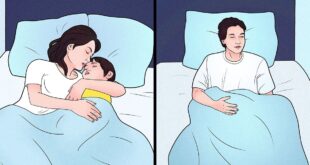Textile printing has undergone a revolution in recent years, with the rise of DIY screen printing and block printing. These techniques have allowed individuals to unleash their creativity and create unique designs on textiles, revolutionizing the way we think about printing on fabric.
In this article, we will explore the art of DIY screen printing and block printing, as well as the techniques and tools involved in textile printing.
DIY screen printing has gained popularity as a cost-effective and accessible way to print on textiles. With the use of a screen, ink, and a squeegee, individuals can easily transfer their designs onto fabric, creating professional-looking prints. This technique allows for endless possibilities, as it can be used on a variety of fabrics and surfaces, from t-shirts and tote bags to home decor items. DIY screen printing provides individuals with the opportunity to express their creativity and create personalized designs that reflect their unique style.
The Rise of DIY Screen Printing
The rise of DIY screen printing has revolutionized the textile printing industry, allowing individuals to create their own unique designs and prints with ease and affordability.
Traditionally, textile printing was a complex and expensive process that required specialized equipment and skilled professionals. However, with the advent of DIY screen printing, anyone can now easily create their own designs and print them onto various fabrics.
This new technology has democratized the textile printing industry, empowering individuals to unleash their creativity and bring their designs to life.
DIY screen printing involves using a mesh screen with a stencil to transfer ink onto a fabric. The screen is coated with a light-sensitive emulsion, which is then exposed to light with the desired design. The areas of the screen that are covered by the design block the light, while the rest of the screen is exposed. After the exposure, the screen is washed, leaving behind a stencil of the design. Ink is then applied to the screen and pushed through the stencil onto the fabric using a squeegee. This process allows for precise and detailed prints, making it a popular choice for creating intricate designs.
One of the key advantages of DIY screen printing is its affordability. Previously, professional textile printing services were often expensive, making it inaccessible for many individuals. DIY screen printing kits and equipment are now readily available at affordable prices, making it possible for anyone to start their own printing venture.
Additionally, the process itself is relatively simple and does not require extensive training or expertise. This accessibility has opened up new opportunities for entrepreneurs, artists, and hobbyists, allowing them to explore their creativity and showcase their designs in a cost-effective and efficient manner.
The rise of DIY screen printing has truly transformed the textile printing industry, empowering individuals to embrace their innovative spirit and create unique and personalized textile prints.
Exploring the Art of Block Printing
Exploring the artistry of creating designs using carved blocks offers individuals the opportunity to engage in a traditional form of textile decoration. Block printing is a technique that has been practiced for centuries, originating in ancient China and India.
It involves carving a design into a wooden block, applying ink or dye to the block, and then pressing it onto fabric to create a pattern. This process allows for intricate and detailed designs to be transferred onto textiles, resulting in unique and visually appealing prints.
Block printing offers a sense of satisfaction and fulfillment to those who engage in it. The process of carving the block requires patience, precision, and skill. Each block is meticulously carved, with the artist carefully considering the placement and intricacy of the design. The act of printing with the block requires a steady hand and a keen eye for detail. The artist must carefully align the block with the fabric and apply just the right amount of pressure to ensure a clean and crisp print. This attention to detail and craftsmanship adds a level of artistry to the process, making each print a work of art in its own right.
Moreover, block printing allows for endless possibilities in terms of design and creativity. Artists can experiment with different types of blocks, carving techniques, and colors to create unique and innovative patterns. The versatility of block printing also extends to the choice of fabric, as it can be used on a variety of materials such as cotton, silk, and linen.
This opens up a world of possibilities for individuals looking to add a personal touch to their clothing, home decor, or accessories. In a society that constantly craves innovation and individuality, block printing offers a traditional yet innovative way to express one’s creativity and style.
Techniques and Tools for Textile Printing
One important aspect to consider when engaging in the art of creating designs using carved blocks is mastering the various techniques and utilizing the appropriate tools.
Block printing on textiles requires a deep understanding of the different techniques that can be employed to achieve desired results.
One common technique is known as direct printing, where the carved block is directly pressed onto the fabric. This technique allows for precise and intricate designs to be transferred onto the textile.
Another technique is known as resist printing, where certain areas of the fabric are blocked off to prevent the dye from penetrating. This technique can create interesting patterns and textures on the fabric.
Additionally, one can also explore techniques like discharge printing, where the dye is removed from the fabric to create a design, or stencil printing, where a stencil is used to create the design on the fabric.
To achieve successful textile printing, it is crucial to have the appropriate tools at hand.
The most important tool is the block itself, which should be carved with precision and attention to detail. The type of wood or material used for the block can also impact the final result.
Additionally, a brayer or roller is used to evenly distribute ink or dye onto the block. It is important to choose a brayer with the appropriate width and firmness to ensure smooth and consistent application of the ink.
Other tools that may be necessary include a palette or tray to hold the ink, brushes for touch-ups or adding details, and a printing press for larger-scale projects.
By mastering the techniques and utilizing the right tools, artists can fully embrace the revolution of textile printing and create innovative designs that push the boundaries of this art form.
Unleashing Your Creativity with Custom Designs
Unleashing creative potential is facilitated through the utilization of customized designs in the realm of textile artistry. With the advent of DIY screen printing and block printing techniques, individuals now have the ability to create their own unique designs and patterns on fabric.
This allows for a greater level of personal expression and creativity, as individuals can now tailor their designs to suit their specific tastes and preferences.
Custom designs offer endless possibilities for textile printing, enabling individuals to experiment with different colors, shapes, and motifs. By creating their own designs, individuals can break free from the limitations of pre-made patterns and templates, allowing for a more authentic and innovative approach to textile art.
Moreover, custom designs allow individuals to create textiles that are truly one-of-a-kind, making their creations stand out in a market saturated with mass-produced goods.
The ability to unleash creativity through custom designs is not only empowering but also encourages a sense of individuality and self-expression. By embracing the DIY approach to textile printing, individuals are able to take ownership of their artistic endeavors and make a statement through their creations.
This fosters a culture of innovation and pushes the boundaries of traditional textile art, sparking new ideas and inspiring others to explore their own creative potential. In an era where originality is highly valued, custom designs offer a means to differentiate oneself and create textiles that are truly unique and captivating.
Conclusion
In conclusion, the DIY screen printing and block printing movements have emerged as revolutionary methods in the field of textile printing. These techniques have allowed individuals to take control of their own creative process and produce unique, custom designs on various fabrics.
With the rise of DIY screen printing, artists and enthusiasts have gained access to affordable and accessible tools that enable them to create professional-looking prints at home. This has democratized the art of textile printing, empowering individuals to express their creativity without the need for expensive equipment or specialized training.
Similarly, block printing has experienced a resurgence in popularity, as artists and designers rediscover the beauty and simplicity of this ancient technique. By carving intricate designs onto blocks and stamping them onto fabric, block printing offers a hands-on and tactile experience that cannot be replicated by digital methods. This traditional approach to textile printing allows for a level of precision and detail that is unmatched by other techniques. Moreover, block printing allows artists to create unique patterns and motifs that reflect their personal style and vision.
Overall, the DIY screen printing and block printing movements have revolutionized the world of textile printing, offering individuals the opportunity to unleash their creativity and produce custom designs. Whether through the use of affordable screen printing kits or the traditional technique of block printing, artists and enthusiasts can now create professional-looking prints at home.
By eliminating the need for expensive equipment and specialized training, these methods have democratized the art of textile printing and allowed individuals to express their unique vision in a tangible and tactile form. The rise of DIY screen printing and block printing marks a new era in textile design, where creativity knows no boundaries.
 printablelabelstemplate
printablelabelstemplate
